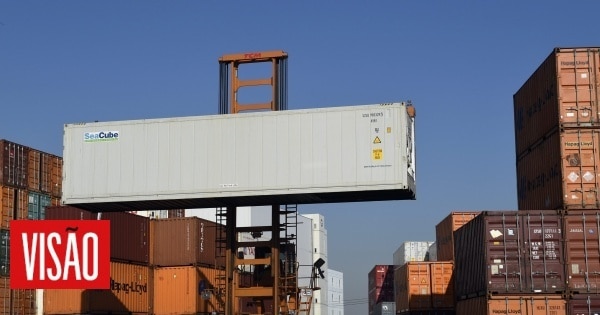Chinese exports fell 0.3% last month, year-on-year, to US$298.4 billion, below the 5.7% growth recorded in September, according to official data released today by the General Administration of Country customs.
The same source reported that imports registered a year-on-year drop of 0.7%, to US$213.4 billion, compared to the 0.3% expansion achieved in the previous month.
China’s trade surplus rose 0.9% to $85.2 billion last month.
Imports from Russia, mainly oil and gas, more than doubled, rising 110.5% in October year-on-year to US$10.2 billion.
China can buy energy from Russia without conflicting with sanctions imposed by the United States, Europe and Japan. Beijing is stepping up shopping to take advantage of Russian discounts. This causes friction with Washington and allied countries by increasing Moscow’s cash flow and limiting the impact of sanctions.
Analysts already expected Chinese trade to weaken as global demand declines amid rising interest rates in Europe and the US.
At the domestic level, demand continues to be affected by epidemic prevention measures, which include the partial or total blockade of several cities, which interrupts economic activity and confines millions of people to their homes for weeks on end.
China’s GDP (Gross Domestic Product) increased by 3.9% in the third quarter from a year earlier, after having grown by 2.2% in the first six months of 2022.
But analysts say activity is weakening as lockdown measures become more frequent, in response to rising numbers of cases in dozens of cities across the country.
“The economy slowed again in October, due to stricter measures to prevent covid-19, as well as falling external demand,” said Larry Hu, of Australian financial services firm Macquarie Group, in a report.
The drop in Chinese demand has global repercussions, affecting developing countries that supply oil, soy and other raw materials, including Angola and Brazil, but also the United States, Europe, Japan and other suppliers of consumer goods, components and necessary technology. to equip Chinese factories.
Exports to the United States rose 35.3% in October from a year earlier to US$47 billion, despite the protracted trade and technology war between the two countries, which resulted in the imposition of punitive customs duties by both countries. the sides. Imports of US goods increased by 52.4% to US$12.8 billion.
China’s trade surplus with the US, which is politically sensitive, rose 29.9% to $34.2 billion.
Exports to the 27 countries of the European Union increased 5.5% to US$44.1 billion, while imports of European products shrank 15.5% to US$21.4 billion. China’s trade surplus with the EU increased by 38.1% to US$22.7 billion.
In the first 10 months of the year, China’s exports increased by 11.1% to US$3 billion, while imports increased by 3.5% to US$2.3 billion. The country’s trade surplus in exchanges with the rest of the world thus stood at 727.7 billion dollars.
JPI // SB

